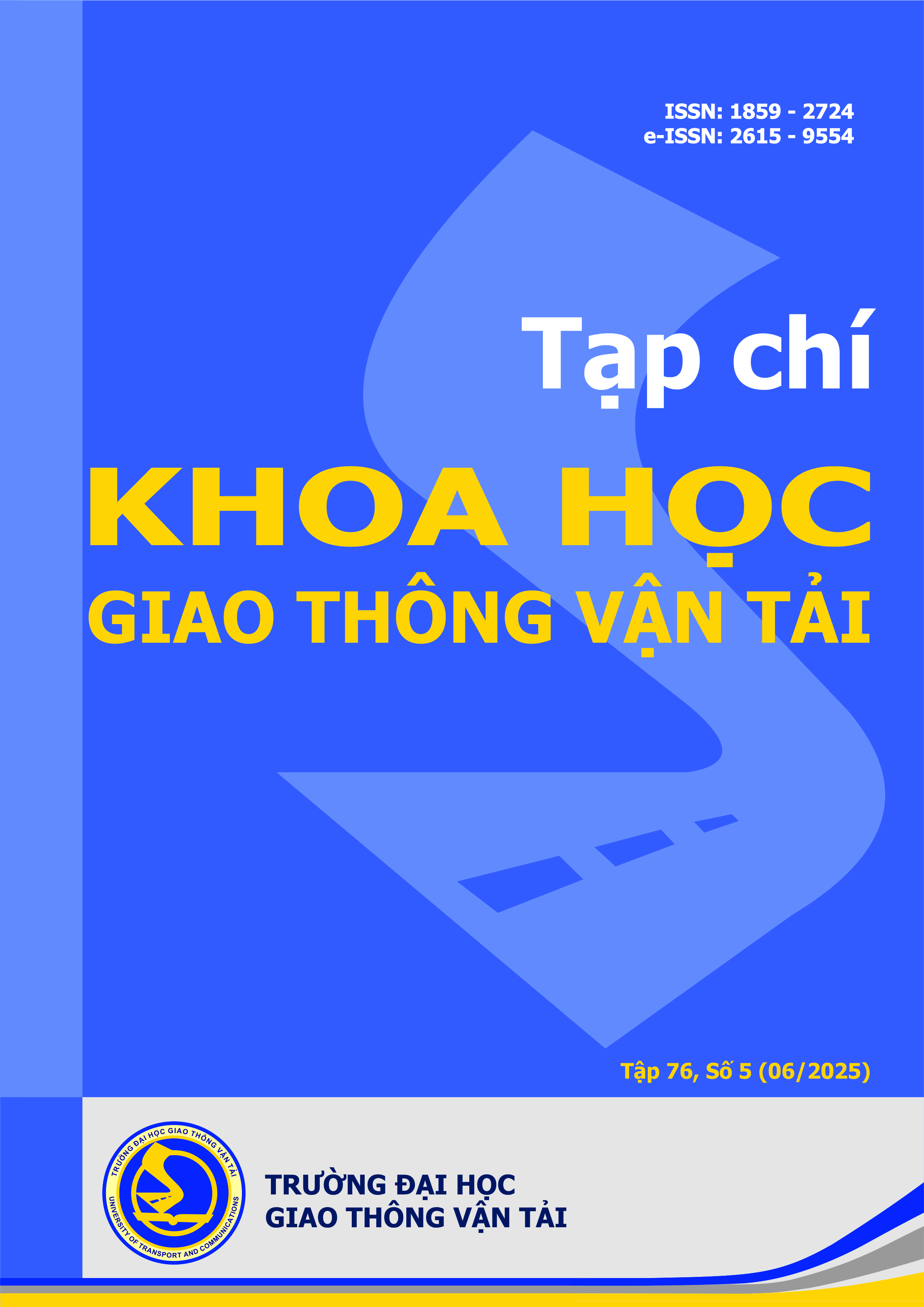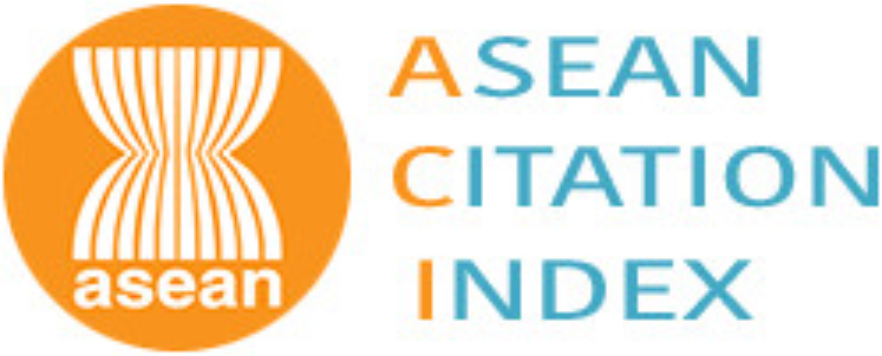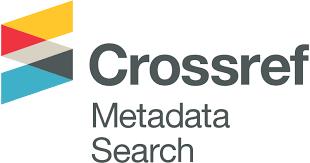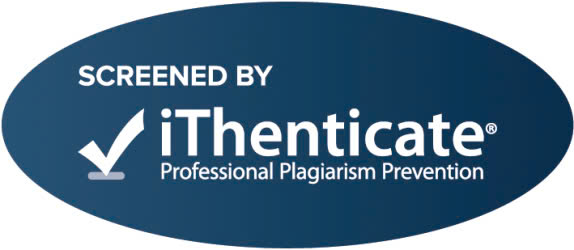Dự báo tải trọng và chuyển vị tới hạn của vật liệu giòn bằng mô hình trường pha kết hợp với phương pháp học máy
Email:
hoangviethai@utc.edu.vn
Từ khóa:
Học máy, Hư hỏng, Mô hình trường pha, Vật liệu giòn, Tải trọng tới hạn, Ứng xử vật liệu, Học máy, Hư hỏng, Mô hình trường pha, Vật liệu giòn, Tải trọng tới hạn, Ứng xử vật liệu
Tóm tắt
Phương pháp trường pha đã chứng minh được tính ưu việt trong việc mô phỏng, xác định tải trọng và chuyển vị tới hạn tại thời điểm bắt đầu phát triển vết nứt của vật liệu giòn. Bài báo này kết hợp phương pháp trường pha để xác định dữ liệu đầu vào và sử dụng học máy để dự báo tải trọng và chuyển vị tới hạn. Mô phỏng được thực hiện trên mẫu vuông chứa vết nứt mồi chịu kéo trực tiếp, với vật liệu giòn, đồng nhất, đẳng hướng, có sự thay đổi về kích thước, chiều dài vết nứt mồi và đặc trưng vật liệu. Việc tạo 100 bộ dữ liệu bằng mô phỏng truyền thống mất nhiều thời gian, do đó, bài báo khai thác các thuật toán học máy để dự báo hư hỏng của mẫu vật liệu trung gian. Kết quả phân tích cho thấy phương pháp học máy giúp sự hội tụ kết quả nhanh chóng, từ đó tạo tiền đề giải quyết các bài toán mẫu vật liệu phức tạp hơn. Cơ sở dữ liệu của 100 mẫu trên được sử dụng để huấn luyện các thuật toán học máy, bao gồm mô hình LR, SVR, RF, KNN, Adaboost, XGboost, và Catboost. Với độ chính xác R2=0,964 khi dự báo giá trị tải trọng tới hạn và có chỉ số R2=0,9751 khi dự báo chuyển vị tới hạn, ta thấy rằng mô hình Catboost có độ chính xác lớn nhất, đồng thời thể hiện khả năng tối ưu trong việc dự báo tải trọng và chuyển vị tới hạn. Nghiên cứu góp phần chứng minh khả năng ứng dụng phương pháp học máy nhằm tối ưu thời gian xác định đặc trưng ứng xử của vật liệuTài liệu tham khảo
[1]. J.M. Sargado, E. Keilegavlen, I. Berre, J.M. Nordbottenn, High-accuracy phasefield models for brittle fracture based on a new family of degradation functions, Journal of the Mechanics and Physics of Solids, 111 (2018) 458–489. https://doi.org/10.1016/j.jmps.2017.10.015
[2]. B.T. Vu, H. Le-Quang, Q.C. He, A phase-field method of crack nucleation investigation for experimental validation by using the improved degradation functions and strain orthogonal decompositions, Applications in Engineering Science, 17 (2024) 100173. https://doi.org/10.1016/j.apples.2023.100173
[3]. T.T. Nguyen, J. Yvonnet, M. Bornert, C. Chateau, K. Sab, R. Romani, R. Le Roy,
On the choice of parameters in the phase field method for simulating crack
initiation with experimental validation, International Journal of Fracture, 197 (2016) 213–226. https://doi.org/10.1007/s10704-016-0082-1
[4]. C. Miehe, M. Hofacker, F. Welschinger, A phase field model for rate-independent crack propagation: Robust algorithmic implementation based on operator splits, Computer Methods in Applied Mechanics and Engineering, 199 (2010) 2765–2778. https://doi.org/10.1016/j.cma.2010.04.011
[5]. J. Bleyer, R. Alessi, Phase-field modeling of anisotropic brittle fracture including
several damage mechanisms, Computer Methods in Applied Mechanics and Engineering, 336 (2018) 213–236. https://doi.org/10.1016/j.cma.2018.03.012
[6]. T.T. Nguyen, J. Réthoré, M. C. Bainetto, Phase field modelling of anisotropic
crack propagation, European Journal of Mechanics-A/Solids, 65 (2017) 279–288. https://doi.org/10.1016/j.euromechsol.2017.05.002
[7]. B.T. Vu, H. Le-Quang, Q.C. He, Fracture modeling in composite structures containing orthotropic materials by incorporating strain orthogonal decompositions into phase-field method of interfacial damage, Engineering Computations, 41 (2024) 2225-2250. https://doi.org/10.1108/EC-12-2023-0951
[8]. T.T. Nguyen, J. Yvonnet, Q.Z. Zhu, M. Bornert, C. Chateau, A phase-field method for computational modeling of interfacial damage interacting with crack propagation in realistic microstructures obtained by microtomography, Computer Methods in Applied Mechanics and Engineering, 312 (2015) 567–595. https://doi.org/10.1016/j.cma.2015.10.007
[9]. B.T. Vu, T.T. Bui, N.L. Nguyen, T.T. Tran, X.L. Nguyen, V.H. Hoang, Phase-field modelings of fracture investigate the influence of interfacial effects on damage and optimal material distribution in brittle inclusion-matrix structures, Forces in Mechanics, 16 (2024) 100282. https://doi.org/10.1016/j.finmec.2024.100282
[10]. L. Xia, D. Da, J. Yvonnet, Topology optimization for maximizing the fracture resistance of quasi-brittle composites, Computer Methods in Applied Mechanics and Engineering, 332 (2018) 234-254. https://doi.org/10.1016/j.cma.2017.12.021
[11]. D. Da, J. Yvonnet, L. Xia, G. Li, Topology optimization of particle-matrix composites for optimal fracture resistance taking into account interfacial damage, International Journal for Numerical Methods in Engineering, 115 (2018) 604-626. https://doi.org/10.1002/nme.5818
[12]. M. Hofacker, C. Miehe, Continuum phase field modeling of dynamic fracture: Variational principles and staggered FE implementation, International Journal of Fracture, 178 (2012) 113-129. https://doi.org/10.1007/s10704-012-9753-8
[13]. R. Alessi, J.J. Marigo, S. Vidoli, Gradient damage models coupled with plasticity: Variational formulation and main properties, Mechanics of Materials, 80 (2015) 351-367. https://doi.org/10.1016/j.mechmat.2013.12.005
[14]. Q. C. He, Q. Shao, Closed-form coordinate-free decompositions of the two-dimensional strain and stress for modeling tension–compression dissymmetry, Journal of Applied Mechanics, 86 (2019) 031007. https://doi.org/10.1115/1.4042217
[15]. M. Mohtasham Moein, A. Saradar, K. Rahmati, S.H. Ghasemzadeh Mousavinejad, J. Bristow, V. Aramali, M. Karakouzian, Predictive models for concrete properties using machine learning and deep learning approaches: A review, Journal of Building Engineering, 63 (2023) 105444. https://doi.org/10.1016/j.jobe.2022.105444
[16]. H.T. Thai, Machine learning for structural engineering: A state-of-the-art review, Structures, 38 (2022) 448-491. https://doi.org/10.1016/j.istruc.2022.02.003
[17]. A.T.G. Tapeh, M.Z. Naser, Artificial Intelligence, Machine Learning, and Deep Learning in Structural Engineering: A Scientometrics Review of Trends and Best Practices, Archives of Computational Methods in Engineering, 30 (2023) 115-159. https://doi.org/10.1007/s11831-022-09793-w
[18]. Y.Feng, Q. Wang, D. Wu, Z. Luo, X. Chen, T. Zhang, W. Gao, Machine learning aided phase field method for fracture mechanics, International Journal of Engineering Science 169 (2021) 103587. https://doi.org/10.1016/j.ijengsci.2021.103587
[19]. H.Q. Nguyen, B.A Le, B.V. Tran, T.S. Vu, T.L. Bui, Deep artificial neural network-powered phase field model for predicting damage characteristic in brittle composite under varying configurations, Machine Learning: Science and Technology, 5 (2024) 025062. https://doi.org/10.1088/2632-2153/ad52e8
[20]. J.T. Hancock, T.M. Khoshgoftaar, CatBoost for big data: an interdisciplinary review. Journal of Big Data 7 (94) (2020) 1-45. https://doi.org/10.1186/s40537-020-00369-8
[2]. B.T. Vu, H. Le-Quang, Q.C. He, A phase-field method of crack nucleation investigation for experimental validation by using the improved degradation functions and strain orthogonal decompositions, Applications in Engineering Science, 17 (2024) 100173. https://doi.org/10.1016/j.apples.2023.100173
[3]. T.T. Nguyen, J. Yvonnet, M. Bornert, C. Chateau, K. Sab, R. Romani, R. Le Roy,
On the choice of parameters in the phase field method for simulating crack
initiation with experimental validation, International Journal of Fracture, 197 (2016) 213–226. https://doi.org/10.1007/s10704-016-0082-1
[4]. C. Miehe, M. Hofacker, F. Welschinger, A phase field model for rate-independent crack propagation: Robust algorithmic implementation based on operator splits, Computer Methods in Applied Mechanics and Engineering, 199 (2010) 2765–2778. https://doi.org/10.1016/j.cma.2010.04.011
[5]. J. Bleyer, R. Alessi, Phase-field modeling of anisotropic brittle fracture including
several damage mechanisms, Computer Methods in Applied Mechanics and Engineering, 336 (2018) 213–236. https://doi.org/10.1016/j.cma.2018.03.012
[6]. T.T. Nguyen, J. Réthoré, M. C. Bainetto, Phase field modelling of anisotropic
crack propagation, European Journal of Mechanics-A/Solids, 65 (2017) 279–288. https://doi.org/10.1016/j.euromechsol.2017.05.002
[7]. B.T. Vu, H. Le-Quang, Q.C. He, Fracture modeling in composite structures containing orthotropic materials by incorporating strain orthogonal decompositions into phase-field method of interfacial damage, Engineering Computations, 41 (2024) 2225-2250. https://doi.org/10.1108/EC-12-2023-0951
[8]. T.T. Nguyen, J. Yvonnet, Q.Z. Zhu, M. Bornert, C. Chateau, A phase-field method for computational modeling of interfacial damage interacting with crack propagation in realistic microstructures obtained by microtomography, Computer Methods in Applied Mechanics and Engineering, 312 (2015) 567–595. https://doi.org/10.1016/j.cma.2015.10.007
[9]. B.T. Vu, T.T. Bui, N.L. Nguyen, T.T. Tran, X.L. Nguyen, V.H. Hoang, Phase-field modelings of fracture investigate the influence of interfacial effects on damage and optimal material distribution in brittle inclusion-matrix structures, Forces in Mechanics, 16 (2024) 100282. https://doi.org/10.1016/j.finmec.2024.100282
[10]. L. Xia, D. Da, J. Yvonnet, Topology optimization for maximizing the fracture resistance of quasi-brittle composites, Computer Methods in Applied Mechanics and Engineering, 332 (2018) 234-254. https://doi.org/10.1016/j.cma.2017.12.021
[11]. D. Da, J. Yvonnet, L. Xia, G. Li, Topology optimization of particle-matrix composites for optimal fracture resistance taking into account interfacial damage, International Journal for Numerical Methods in Engineering, 115 (2018) 604-626. https://doi.org/10.1002/nme.5818
[12]. M. Hofacker, C. Miehe, Continuum phase field modeling of dynamic fracture: Variational principles and staggered FE implementation, International Journal of Fracture, 178 (2012) 113-129. https://doi.org/10.1007/s10704-012-9753-8
[13]. R. Alessi, J.J. Marigo, S. Vidoli, Gradient damage models coupled with plasticity: Variational formulation and main properties, Mechanics of Materials, 80 (2015) 351-367. https://doi.org/10.1016/j.mechmat.2013.12.005
[14]. Q. C. He, Q. Shao, Closed-form coordinate-free decompositions of the two-dimensional strain and stress for modeling tension–compression dissymmetry, Journal of Applied Mechanics, 86 (2019) 031007. https://doi.org/10.1115/1.4042217
[15]. M. Mohtasham Moein, A. Saradar, K. Rahmati, S.H. Ghasemzadeh Mousavinejad, J. Bristow, V. Aramali, M. Karakouzian, Predictive models for concrete properties using machine learning and deep learning approaches: A review, Journal of Building Engineering, 63 (2023) 105444. https://doi.org/10.1016/j.jobe.2022.105444
[16]. H.T. Thai, Machine learning for structural engineering: A state-of-the-art review, Structures, 38 (2022) 448-491. https://doi.org/10.1016/j.istruc.2022.02.003
[17]. A.T.G. Tapeh, M.Z. Naser, Artificial Intelligence, Machine Learning, and Deep Learning in Structural Engineering: A Scientometrics Review of Trends and Best Practices, Archives of Computational Methods in Engineering, 30 (2023) 115-159. https://doi.org/10.1007/s11831-022-09793-w
[18]. Y.Feng, Q. Wang, D. Wu, Z. Luo, X. Chen, T. Zhang, W. Gao, Machine learning aided phase field method for fracture mechanics, International Journal of Engineering Science 169 (2021) 103587. https://doi.org/10.1016/j.ijengsci.2021.103587
[19]. H.Q. Nguyen, B.A Le, B.V. Tran, T.S. Vu, T.L. Bui, Deep artificial neural network-powered phase field model for predicting damage characteristic in brittle composite under varying configurations, Machine Learning: Science and Technology, 5 (2024) 025062. https://doi.org/10.1088/2632-2153/ad52e8
[20]. J.T. Hancock, T.M. Khoshgoftaar, CatBoost for big data: an interdisciplinary review. Journal of Big Data 7 (94) (2020) 1-45. https://doi.org/10.1186/s40537-020-00369-8
Tải xuống
Chưa có dữ liệu thống kê

Nhận bài
10/03/2025
Nhận bài sửa
17/04/2025
Chấp nhận đăng
10/06/2025
Xuất bản
15/06/2025
Chuyên mục
Công trình khoa học
Kiểu trích dẫn
Vũ Bá, T., Hoàng Việt, H., Nguyễn Xuân, L., & Nguyễn Duy, T. (1749920400). Dự báo tải trọng và chuyển vị tới hạn của vật liệu giòn bằng mô hình trường pha kết hợp với phương pháp học máy. Tạp Chí Khoa Học Giao Thông Vận Tải, 76(5), 739-751. https://doi.org/10.47869/tcsj.76.5.8
Số lần xem tóm tắt
88
Số lần xem bài báo
31









